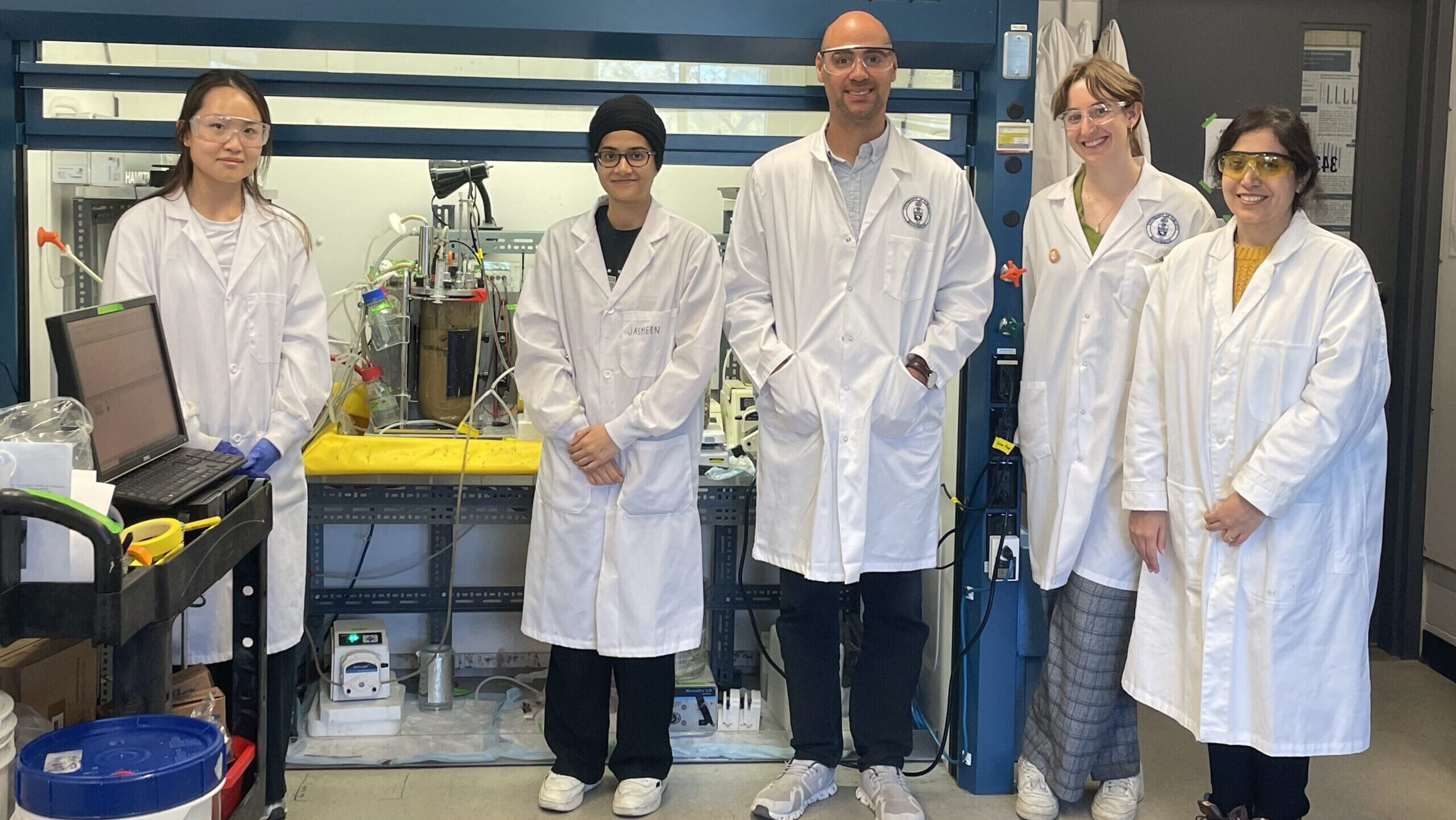Anaerobic digestion can be used to digest organics from all kinds of sources: wastewater sludge, livestock manure, food waste and more. And the technology is simple. Just create an oxygen-free environment where naturally occurring microbes can flourish and let them munch away.
Today, most anaerobic digestion is optimized to produce methane, which can be captured and refined into natural gas. But a host of different microbes exist that break down organics into other valuable substances. And with a bit of biological tinkering, University of Toronto researcher Christopher Lawson sees commercial potential to harness that power.
“How do we go beyond biogas?” asks the chemical engineer. “Could we make anaerobic digestion a platform technology where many different products could be recovered based on retooling the biology of the process?”
To do that, Lawson teamed up with key industrial partners to establish the Waste to Chemicals (W2C) Alliance. With funding from NSERC and Mitacs and the support of OWC and the Ontario Clean Water Agency, the Alliance is currently focused on generating one particular group of products: medium-chain fatty acids (MCFAs).
It’s a strategic choice for a few reasons. MCFAs command higher prices than biogas. There’s significant demand, since MCFAs are a common ingredient used in animal feed, personal care essentials, nutraceuticals and more. Producing them here is Canada would replace environmentally unsustainable, imported sources like palm oil.
And there’s no shortage of raw material. At Lawson’s Microbiome Engineering Lab, his team is starting with organics from residential green bins, but they could just as easily be using sewage sludge, manure or forestry waste.
Customizing microbial communities
The market is there. The feedstock is there. But how do you actually turn organic waste into MCFAs? The key is establishing the right mix of microbes.
The first way Lawson’s lab is doing that is by tweaking the parameters within a bioreactor to favour the specific bacteria that produce MCFAs. And it’s working.
Building on earlier successes we highlighted in 2022, their bench-scale system is currently converting around 20 per cent of organic feed directly to MCFAs.
To deliver even bigger results, Lawson is now applying a second strategy: genetically modifying the bacteria to enhance MCFA production during anaerobic digestion.
“We’ve been able to develop genetic tools for some of the microbes that synthesize the MCFAs,” Lawson explains. “That’s never been done before.”
Clearing a path to commercialization
The genetic engineering doesn’t just increase the amount of MFCAs produced. It also enables the bacteria to make longer MCFAs, addressing a key market challenge.
The length of a fatty-acid chain is determined by the number of carbon atoms. And while Lawson’s mixed culture communities can churn out lots of six-carbon and some eight-carbon fatty-acid chains, industry is looking for chains with 8 to 12 carbons.
That’s where Lawson believes engineered microbes can make a difference.
Another challenge is preventing pre-existing microbes in the feedstock from disrupting the specialized microbes that Lawson and his team have been working so hard to cultivate.
And then there’s the question of extracting the MCFAs they produce. To achieve that, Lawson teamed up with Jay Werber, a colleague at the University of Toronto, who is developing a novel polymeric membrane technology that can selectively separate out MCFAs.
Tapping industry expertise
It’s just one of many collaborations Lawson is leveraging through the W2C Alliance. For example, Veolia — a global leader in anaerobic digestion — is informing the design of bioreactors. Industrial microbiology company Envera is offering biotechnology expertise. And CBS Bio Platforms is providing crucial product-development insights, drawing on their extensive experience manufacturing enzyme supplements, feed enhancers and more. Additionally, the Ontario Clean Water Agency is informing process operations and providing data for technoeconomic analysis, further enhancing the project’s comprehensive approach.
“We work with them to review progress of the project, get practical insights and operational context for how a process like this might work at scale,” Lawson explains. Those different points of view are crucial, he adds. “What collaboration does is it really accelerates things,” he says. “It really helps frame the project right from the onset.”
Thanks to that support, Lawson believes they could have bench-scale synthetic systems ready within two years and a pilot-scale operation within five. The environmental and economic benefits could be huge, helping to reduce greenhouse emissions and advance sustainable chemical production.
And MCFAs are just the beginning. These versatile molecules can be transformed into other industrial chemicals like medium chain fatty alcohols, methyl ketones, diols and diacids — each one with a suite of different applications.
“If we can make stable microbial communities, especially ones that could bring in some synthetic biology tools, the potential would be enormous,” Lawson says. “It would really be a new platform for chemical manufacturing.”


